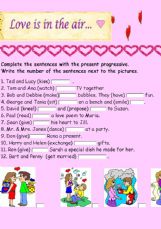O infinitivo é a forma original do verbo tal qual se encontra num dicionário.
Pode aparecer na frase com ou sem o “to”.
O gerúndio é o verbo com a terminação
–ing.
O infinitivo com “to” é de uso mais amplo aparecendo após a grande
maioria dos verbos, adjetivos, advérbios, nomes, pronomes, etc:
Exemplos:
I expect
to be there.
This car is hard to park.
She knows where to find the
keys.
Também pode indicar propósito, finalidade:
They went there
to buy something = They went there in order to buy something.
Usa-se o
infinitivo sem o “to”:
1. após: modal verbs (can, could, must, etc.)
2.
após: os auxiliares do-does-did-will-would
3. após: had better, would rather,
rather than
4. após: as preposições but e except: exemplo: She did nothing but
complain.
5. após: os verbos make e let: exemplo: You make me feel brand new.
O gerúndio é usado como substantivo nas funções de sujeito,
objeto indireto ou objeto indireto (após preposição use sempre o
gerúndio):
Exemplos:
1. Swimming is his favourite sport.
2. He likes
swimming.
É usado também após os
verbos go e come indicando atividade física, e na expressão go
shopping:
We’re going riding this afternoon.
When are you going
shopping? As soon as we get our salary.
Usa-se SEMPRE o gerúndio após os
verbos abaixo:
Admit - Understand
Avoid - Excuse
Appreciate -
Finish
Consider - Keep
Delay - Mention
Fancy - Mind
Deny - Miss
Detest -
Practice
Dislike - Resist
Enjoy - Risk
Escape - Quit
Da mesma forma
com os verbos de percepção:
Feel - See
Observe - Notice
Hear
- Watch
Atente para o uso das seguintes expressões abaixo.
Algumas vêm
acompanhadas de infinitivo (com ou sem o “to”), outras de gerúndio:
1.
Had better (’d better): é melhor, seria melhor - sem o “to” (expressa
conselho)
You’d better tell me the truth.
Had she better try
again?
You’d better not leave late.
2. Would rather (’d rather):
preferir
We’d rather stay home.
Would you rather watch tv?
I’d
rather not see her now.
3. Used to: costumava; indica ação habitual no
passado:
I used to love you.
Did he use to play tennis as a
child?
They didn’t use to go to the movies.
4. Be used to/Be
accustomed to/ get used to: estar acostumado a – são sempre seguidas de gerúndio
porque o “to”, no caso, é preposição:
We’re used to getting up
late.
5. Can’t help: não poder deixar de – sempre seguida de
gerúndio:
I can’t help falling in love.
6. To be worth/worthwhile:
valer a pena
It was worth listening to him.
quinta-feira, janeiro 18
quarta-feira, janeiro 17
Forming Gerund - breve explicação em INGLÊS + exercícios
Forming Gerunds
Here is a brief review of gerunds and how to form them.
ex: walking, talking, thinking, listening
ex: think + ing = thinking
Spelling Rules
There are a few spelling rules that you need to know in order to form gerunds correctly. The spelling of a gerund depends on the vowels (a, e, i, o, u) and consonants (b, c, d, f, etc.) at the end of the verb.
Rule | Example |
|---|---|
| If there is more than one consonant, just add ING | think + ing = thinking |
| If there is more than one vowel, just add ING | beat + ing = beating |
| If there is one vowel and one consonant, and the syllable is stressed, double the consonant and add ING | hit + t + ing = hitting |
| If there are one or more consonants and E, remove the E and add ING | take + ing = taking |
| In most other cases, just add ING | study + ing = studying see + ing = seeing |
terça-feira, janeiro 16
Likes and Dislikes (GERUND)
Likes and
Dislikes
Verb "to
like"

Pay attention!
1. We add -s or -es in the 3rd person singular.
E.g. He likes / He doesn't like.
2. In the interrogative form we use the auxilary verb "to be" E.g. Do you like oranges? / Does he like cakes?
 3. In the negative form we use the
auxilary verb "to do" and the negative
"not".
3. In the negative form we use the
auxilary verb "to do" and the negative
"not".
sábado, janeiro 13
Present Continuous - some online activities
Present Continuous Activities

Here are a few activities for you to practice the present continuous. This one here is a fill-in-the-gap exercise. Use the present simple or the present continuous.Click here to begin.

| Review -ing form some exercises to review or check if your pupils have acquire the present continuous and the -ing formation Level: elementary Author:MariaElena |
Publicada por
teacher
à(s)
13.1.18
0
comentários


Enviar a mensagem por emailDê a sua opinião!Partilhar no XPartilhar no FacebookPartilhar no Pinterest
Etiquetas:
Present Continuous
segunda-feira, janeiro 8
quinta-feira, janeiro 4
present simple - review
Publicada por
teacher
à(s)
4.1.18
0
comentários


Enviar a mensagem por emailDê a sua opinião!Partilhar no XPartilhar no FacebookPartilhar no Pinterest
Etiquetas:
simple present
Subscrever:
Mensagens (Atom)































